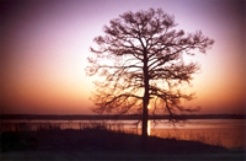Big Lake Fishing Spot
- Mean Depth: 3'
- Elevation: 230'
- Last Modified By: vinny60 on 09/10/09 06:45 PM
- Ask about Big Lake in our Fishing Forums
Photos

Fish Species
Big Lake Description
Refuge Facts Established: 1915. Acres: 11,038. Located in Mississippi County, AR 18 miles west of the Mississippi River. Other management: conservation easement--one in Green County; fee title tracts--two in three counties totaling 151 acres. Wilderness area of 2,100 acres. National Natural Landmark of 5,000 acres. Location: the refuge is located on Highway 18, two miles east of Manila. Refuge Objectives: Provide habitat for wintering migratory waterfowl and other birds. Provide habitat for nesting wood ducks. Provide environmental education/ interpretation opportunities to the public. Provide recreational (hunting, fishing, wildlife observation) opportunities for the public. Big Lake consists primarily of wooded swamps and open water. Big Lake is shallow with an average depth of 3 feet. The swamp areas are characterized by stands of black willow, buttonbush, and towering bald cypress trees. Tree species on higher ground include cottonwood, green ash, hackberry, red maple, sycamore, river birch, and a variety of oaks. Open water areas are populated with a variety of aquatic plants. Aquatic plants such as Sago pondweed and American pondweed are a valuable waterfowl food source. Waters of the refuge abound with fish, aquatic reptiles, aquatic insects and crustaceans. Largemouth bass, crappie, sunfish, catfish, buffalo, and carp are the most common fish species. The Big Lake Wilderness Area is one of 11 areas in Arkansas and is the only wilderness area in eastern Arkansas.
Big Lake may refer to: